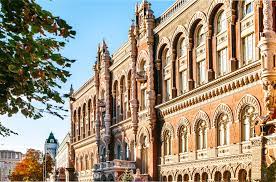
Ukrainian companies increased exports of ferrous scrap by 52.2% in January-March this year compared to the same period last year, up to 61.261 thousand tons from 40.255 thousand tons.
According to statistics released by the State Customs Service, 20,907 thousand tons of scrap metal were exported in March (23,194 thousand tons in February and 17,160 thousand tons in January).
In monetary terms, scrap exports increased by 65.7% to $19.431 million from $11.725 million.
In January-March, Ukraine exported scrap metal to Poland (90.56%), Greece (5.42%) and Germany (3.89%).
In the first three months of the year, the country imported 254 thousand tons of scrap metal for $94 thousand. Imports were carried out from Slovakia (68.82% in monetary terms), Poland (13.98%) and the Netherlands (10.75%), while in January-March 2023, 46 tons of scrap were imported from Slovakia for $16 thousand.
As reported, in 2023, the scrap collecting enterprise of Ukraine increased the export of scrap metal from the country by 3.4 times compared to the previous year – up to 182,485 thousand tons from 53,557 thousand tons. In monetary terms, exports increased 2.74 times to $52.723 million from $19.271 million.
Earlier, Ukrmetallurgprom President Oleksandr Kalenkov stated in an op-ed on the Interfax-Ukraine website that scrap metal is exported through the European Union, which has a preferential export duty of EUR3 per ton, and from there the raw materials are redirected to real customers. He noted that exporting raw materials directly to customers would cost EUR180 in export duties, and the Ukrainian budget has already lost UAH 350 million.
The head of Ukrmetallurgprom called for a temporary ban on the export of ferrous scrap to provide steelmakers with strategically important raw materials in the ongoing war. He also clarified that a ton of scrap metal processed into steel brings in 10 times more to the budget than the EU export duty, which is about $300 per ton.
In 2022, Ukraine reduced exports of ferrous scrap by 11.5 times compared to the previous year, to 53,557 thousand tons, and in monetary terms, it decreased by 12.4 times, to $19.271 million.

As part of its preparations for the next heating season, the Ukrainian government will focus on the speedy construction of small-scale generation facilities for Kharkiv and other cities, with a further transition to the construction of large gas turbine plants in the medium term.
This was announced by Oleksandr Kubrakov, Vice Prime Minister for Recovery of Ukraine, on the air of the national telethon “United News” on Friday evening.
“We will try to build urgent low-capacity facilities for cities such as Kharkiv before the next heating season together with our partners. There are cogeneration units already provided by some governments. This may be the main solution for Kharkiv for this season,” he said.
According to the Vice Prime Minister, an action plan is currently being drawn up at the government level and in close consultation with local authorities, which should be implemented by the beginning of winter.
“In the medium term, large gas turbines with high efficiency are our future. We need several gigawatts of such capacities across the country,” Kubrakov said.
As he explained, gas turbine construction projects are quite attractive to investors due to, among other things, their high efficiency and low cost of electricity production.
“I hope that the export credit agencies of those countries that produce such equipment – the United States, Germany, and Japan – will be able to provide us with financing for their equipment, and we will be able to implement this plan,” the Deputy Prime Minister stated.
As reported, more than 85% of Ukraine’s thermal generation capacity and about 50% of its hydroelectric generation capacity have been destroyed as a result of enemy massive attacks.
According to former Energy Minister Olha Buslavets, in May of this year, the electricity deficit in Ukraine may reach about 3 GW.

Prime Minister of Ukraine Denys Shmyhal said that Ukraine seeks to start negotiations on joining the European Union as soon as possible – no later than June this year, the Communications Department of the Secretariat of the Cabinet of Ministers of Ukraine reported on Friday.
“We expect the EU to approve the negotiation framework for us without delay. We see no objective obstacles that could prevent this. We are actively supported by all European countries,” Shmyhal said at the panel “European Integration of Ukraine, its Regions and Territorial Communities” at the forum “Life of Regions in War.”
He added that Ukraine has reliable partners in the EU who are ready to help and share their experience for the successful completion of the negotiation process.
The Prime Minister noted that Ukraine has done all the homework to start negotiations on joining the EU. “The European Commission has confirmed that Ukraine has fulfilled all the conditions. We have demonstrated well-coordinated work. Today, the President announced a proposal to develop an infrastructure for European integration. This should include representatives from the government to communities who will work with European funds,” Shmyhal said.
He added that the Ukrainian government, for its part, is ready to help communities attract as much money as possible from the EU. At the same time, the main problem remains the ability of communities to prepare and present relevant projects. “This should be a priority for communities. Because this year we have access to European funds. Ukraine has moved from candidate status to negotiator status. And this gives us additional opportunities,” Shmyhal said.

The National Bank of Ukraine (NBU) after weakening the official hryvnia exchange rate on Thursday by 14 kopecks on Friday lowered it by another 23 kopecks. – to 39.3990 UAH/$1, which is a new historic low.
As one of the market participants told Interfax-Ukraine news agency, by the end of trading, quotations in the Bloomberg system reached 39.45 UAH/$1 to 39.465 UAH/$1, while the volume of transactions rose to almost $160 million from $123 million the day before.
The reference value of the national currency exchange rate, set by the NBU at 12:00, weakened by 25 kopecks on Friday. – to UAH 39.3489/$1.
In the cash market, the national currency exchange rate on Friday fell by only 4 kopecks. – to UAH 39.49/$1, although during the day it reached UAH 39.55/$1.
Despite the weakening of the official hryvnia exchange rate to a new historic low, the net sale of dollars by the National Bank fell this week to $377.1 million from $454 million a week ago and $652.7-680.4 million in the previous two weeks.
The NBU website indicates that the sale of foreign currency by the regulator decreased to $378.3 million from $483.6 million a week earlier, while the purchase – to $1.3 million from $29.6 million.
As reported, the NBU’s net sales rose to $1.79bn in March from $1.51bn in February, but given the jump in external revenues to a record level of almost $9bn, international reserves increased by 18% or $6.7bn in March to a record level of $43.76bn.
In January, the NBU lowered the forecast of Ukraine’s international reserves at the end of 2024 to $40.4 billion from $44.7 billion and to $42.1 billion from $45 billion at the end of 2025.

The Netherlands has allocated an additional EUR1 billion in military aid and EUR400 million for reconstruction to Ukraine in addition to the commitments under the bilateral security agreement, President Volodymyr Zelenskyy said after a phone conversation with Dutch Prime Minister Mark Rutte.
“In a telephone conversation, Prime Minister Mark Rutte has just announced that the Netherlands has allocated another EUR 1 billion for military assistance to Ukraine and EUR 400 million for reconstruction. This is in addition to the obligations under our bilateral security agreement,” Zelenskyy wrote on his Telegram channel.
The Head of State expressed gratitude to the Prime Minister and all the people of the Netherlands.
According to him, during the conversation, they also discussed joint work with partners to accelerate the supply of artillery shells, ammunition and air defense systems.
” I thanked him for the effective Justice for Ukraine conference in The Hague and the launch of the Register of Damages as a result of it. He spoke about the preparations for the Peace Summit in Switzerland and invited the Netherlands to join. We also discussed the necessary efforts to ensure that this event is supported by as many countries as possible,” Zelenskyy wrote.
For his part, Rutte said that his country would provide Ukraine with additional military assistance worth EUR1 billion in 2024 and allocate EUR3 billion in defense support for 2025.
“The Netherlands will provide an additional EUR1 billion in military support this year. This is in addition to the EUR2 billion already approved by the authorities. We have also decided that we will allocate EUR3 billion for military support for the next year,” Rutte wrote on social network X.
In addition, according to the Prime Minister, the Netherlands is using EUR400 million “to support the Ukrainian economy and repair vital energy infrastructure.”
Rutte reminded that the Netherlands continues to make efforts to deliver more ammunition and air defense equipment to Ukraine faster, together with international partners, including Denmark and the Czech Republic.
In early March, the Netherlands signed a 10-year bilateral security agreement with Ukraine. According to Rutte, his country will provide Ukraine with assistance and support “across the entire spectrum of defense cooperation, as well as in the areas of reconstruction, sanctions support, and the fight for justice.”

Slovakia may begin construction of a highway leading from Kosice to the Uzhhorod-Vysne Nemecke checkpoint on the border with Ukraine, the press service of the Ukrainian Ministry of Finance reported on Friday.
The project of building a new highway was discussed at bilateral talks on improving cross-border communication in Slovakia with the participation of Deputy Finance Minister of Ukraine Oleksandr Kava as part of a government delegation headed by Prime Minister Denys Shmyhal.
“The meeting also discussed the project of building a highway from the Uzhhorod-Vysne Nemecke checkpoint to the suburbs of Kosice. This is part of Slovakia’s main highway, the D1, which connects the country’s two largest cities, Bratislava and Kosice, and is also part of the pan-European network of expressways,” the statement said.
The parties also discussed the issue of opening the Uzhhorod-Vysne Nemecke checkpoint not only for cars, but also for pedestrians and cyclists. The checkpoint will be accessible by public transport from both sides of the border without the need to use a car.
“This is especially important for residents and guests of the regional center of Zakarpattia Oblast, as it will provide them with more opportunities for movement,” the press service adds.
In addition, it is planned to expand the automobile part of the checkpoint from four to five lanes, which will increase its capacity.
Kava, quoted in the report, noted that the agreements reached are a step towards creating a smooth and dynamic cross-border connection.
“They will not only improve the daily lives of our citizens, but will also contribute to overall economic growth together with partner countries,” the deputy minister said.
Earlier, Deputy Minister of Communities, Territories and Infrastructure Development Serhiy Derkach said that a passenger terminal with several lines of traffic for passenger buses would be built at the Uzhhorod-Vysne Nemecke checkpoint on the border with Slovakia by the end of 2024.